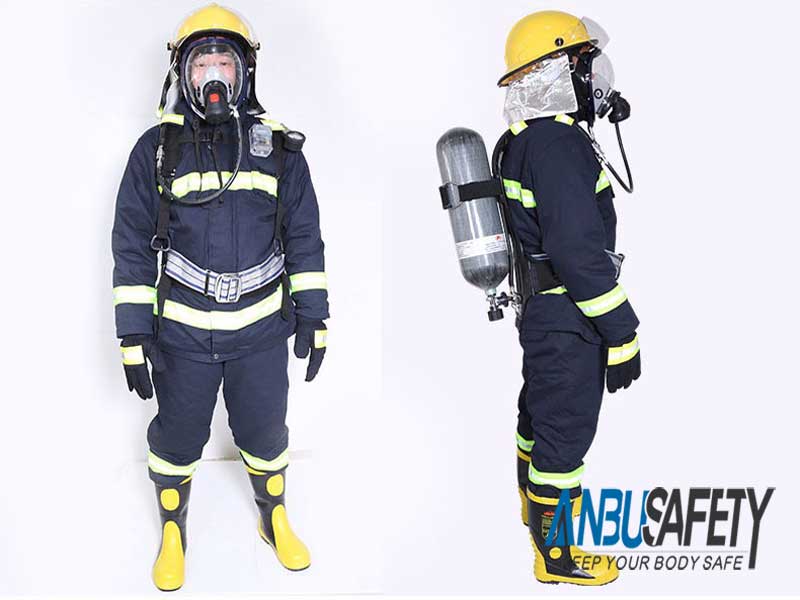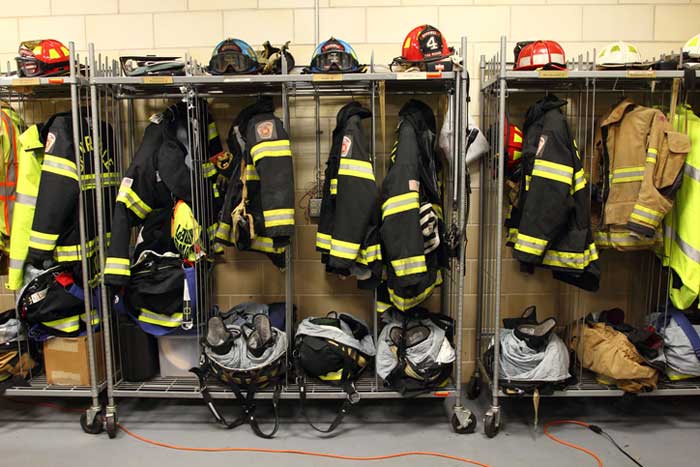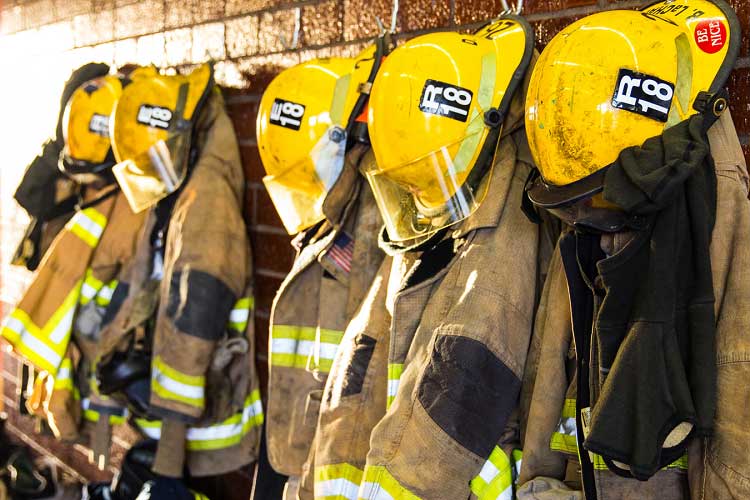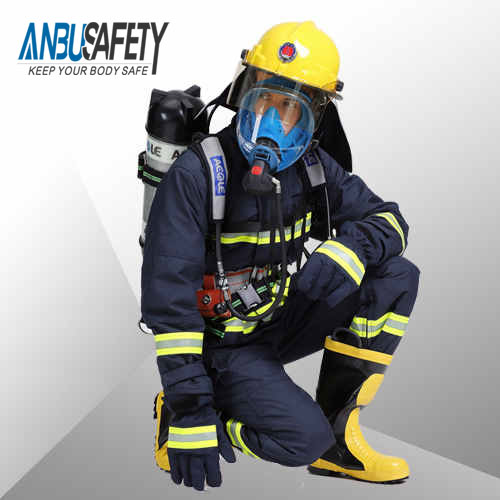Firefighter PPE
Table of Content
- What is firefighter PPE
- Different types of firefighter PPE
- Why PPE for firefighter important
- Firefighter PPE temperature rating
- Firefighter PPE checklist
- How to clean firefighter PPE
- How heavy is firefighter PPE
- How often firefighter PPE replaced
- How PPE affect firefighter sutuational
- How to find firefighter PPE suppliers
- Conclusion
The Ultimate Guide to Firefighter PPE
PPE is important for every firefighter. Firefighters are some of the most important people in our communities. They risk their lives to save others. But being a firefighter isn’t easy. Firefighters have to wear a lot of different pieces of personal protective equipment, or PPE, to do their jobs safely. Although it is not always visible, there are dozens of pieces of equipment that firefighters must wear while on duty. Here’s everything you need to know about it.
What is Firefighter PPE?
Firefighter PPE is a collective term for the personal protective equipment (PPE) worn by firefighters. Firefighter PPE stands for Personal Protective Equipment. Firefighters use this protective equipment to protect themselves from the heat, fire, smoke and chemicals encountered during a fire emergency.

What are the different types of Firefighter PPE?
There are several different types of firefighter personal protective equipment (PPE), which is safety clothing and gear worn by firefighters. Some of these include:
Firefighter clothing – Firefighter coats protect their upper bodies from heat and flames as well as from falling objects. They are made of Nomex material which is flame resistant and provides some protection against heat. Firefighter coats have a hood with a wire brim around the edge for protection against heat and flames, as well as being able to hold a helmet on securely in an emergency situation (such as when there’s no time to put on a helmet!).
Firefighter helmets – Firefighters wear specialized helmets that protect their heads from falling objects and impact injuries. The helmets also can help keep their faces clear of smoke and water in the event of an emergency. Firefighters wear helmets as part of their turnout gear to protect their heads from falling debris and other hazards. The helmets are also equipped with headlamps so the firefighters can see in the dark while responding to calls at night.
Firefighter boots – Firefighters wear sturdy boots with thick rubber soles to provide protection from extreme heat and flames, as well as slippery surfaces when entering a burning building. They also have treads for traction on wet floors or steps.
Steel-toed boots are designed to protect feet against falling objects, electrical shock and injury from sharp objects such as broken glass or metal pieces. Firefighters often wear rubber soles under their boots to provide better traction when walking on slippery surfaces such as wet floors with spilled chemicals or water. Rubber soles also provide added protection against electrical hazards such as live wires in the water that could cause an electric shock if they come into contact with bare skin exposed by the opening at the top of the boot.
Firefighter gloves – Firefighters wear gloves made from leather or other material to protect their hands from extreme heat and flames, cuts, burns and other injuries that may occur during a fire rescue operation. These gloves can be made from leather or canvas, with a rubber coating on the palms and fingers. They help protect hands from heat, burns and glass cuts.
Safety Goggles are one of the most important parts of firefighter PPE. Goggles protect firefighters’ eyes from smoke and burning embers, which can cause serious eye injury. Firefighters also wear goggles when using high-pressure hoses to wash down buildings during firefighting operations. The water pressure can be so powerful that it hurts your face if you don’t wear goggles!
Firefighter turnout gear – This is the most common type of PPE for firefighters. It’s a full-body suit made from Nomex or Kevlar, which provides protection from heat, flames and other hazards that firefighters may encounter when responding to a fire.
Another type of fireflighter PPE is called SCBA, which stands for self-contained breathing apparatus. This set up includes a mask and regulator that allows firefighters to breathe clean air while fighting fires. It also includes a tank on their back that holds the clean air they need to breathe while fighting fires.
Firefighters also use SCBA when they enter burning buildings to search for people who may be trapped inside or searching for items that may be evidence in a crime scene investigation. They wear this equipment because it protects them from smoke inhalation and other harmful chemicals that could be released from burning materials during the fire.

Why PPE For Firefighters is Important?
Firefighters work in a hazardous environment. This is why they need to wear Personal Protective Equipment (PPE) during their working hours. No matter how skilled and experienced firefighters are, accidents may occur which can cause injuries or even death; therefore, wearing PPE is vital for the safety of fire fighters on duty.
Firefighters are exposed to high temperatures while battling fires as well as harmful smoke and other airborne hazards such as toxic gases, dust, etc., which can prove detrimental to their health if not protected by appropriate clothing and equipment. The special clothing worn by a firefighter must be able to withstand various conditions that include extremely high temperature ranging from 400 °F (204 °C) up to 1500 °F (816 ˚C).
In addition it should also protect them from common dangers encountered at fire scenes including burns caused due to contact with extreme heat or steam; inhalation of toxic fumes produced due to chemical reactions in the fire zone; cuts caused when they move through or around the fire zone; and cuts, as well as burns which are caused by falling objects.
What is firefighter PPE temperature rating?
Firefighter PPE temperature rating is a measure of the thermal resistance of a firefighting garment. The higher the temperature rating, the more heat it will be able to withstand before reaching its maximum safe working temperature.
Firefighter PPE temperature ratings are measured in degrees Celsius (°C). The most common firefighter PPE temperature ratings are 100°C, 150°C and 200°C. Firefighter PPE temperature ratings are also listed for different types of clothing. For example, 100°C is the rating assigned to firefighting suits, trousers and overcoats; 150°C is assigned to high visibility jackets which feature reflective strips on the shoulders; and 200°C is assigned to full-body suits such as Nomex or Kevlar.
What are firefighter PPE materials?
Firefighter PPE materials can be divided into two categories: natural fibers (cotton) and synthetic fibers (nylon). The main differences between these two types of material are that cotton burns easily while nylon does not. Therefore, it’s important for firefighters to wear clothes made from a fire-resistant material like Nomex or Kevlar when fighting fires in order protect themselves from burning materials such as wood, plastics or other combustible objects that may have been trapped inside a building.
Guideline to Firefighter PPE Checklist
Firefighter Personal Protective Equipment, or PPE, is the gear that a firefighter must wear and use to protect him from the risks of firefighting. Firefighters use this equipment when performing tasks such as interior firefighting and fire prevention.
Firefighters must be properly trained in how to use their PPE so that they can perform their jobs safely. A firefighter should know how each piece of equipment works and how it will protect them from injury or death.
The following is a checklist of some of the most common types of firefighting PPE:
Fire Helmet: A helmet is used by firefighters to protect their heads from falling objects and flying debris during a firefight or rescue operation. Helmets also provide protection from heat, smoke and toxic gases generated by fires and explosions. Helmets are designed to fit snugly around a firefighter’s head so they don’t fall off during an emergency situation.
Face Shield/ Visor: A face shield protects a firefighter’s eyes from flying embers, sparks and other debris while fighting fires inside structures or while doing search-and-rescue operations in smoke-filled areas where there is no visibility due to thick smoke conditions. It also helps keep out dirt and dust during cleanup operations after a fire.
Fire Boots: Firefighters wear fire boots to protect their feet from burns and stab wounds caused by hot materials such as melted plastics, paper, wood or other combustible objects that may have been trapped inside a building.
Goggles: Goggles are used by firefighters to protect their eyes from dust, smoke and toxic gases in the air during an emergency situation or when performing search-and-rescue operations inside smoke-filled areas.
Fire Suit/ Jacket: A firefighter’s suit protects his body from burns through direct skin contact with flames and heat sources during firefighting operations. It also provides protection against chemicals such as ammonia, hydrochloric acid, sulfur dioxide and chlorine gas released into the environment while fighting fires at hazardous waste facilities or chemical manufacturing plants.
Fire Gloves: Gloves are worn by firefighters to protect their hands from cuts and abrasions caused by falling objects during rescue operations involving escape of people trapped inside structures like buildings after a fire breaks out there.

what piece of firefighter PPE do we put on first?
The answer to this question is the SCBA. The SCBA is the most important piece of equipment for a firefighter. It’s what keeps them alive and breathing, so it should go on first.
The next piece of equipment is your firefighter helmet. Firefighters wear helmets to protect their head from falling objects, heat, and flames.
Next comes the firefighter coat, which protects against heat and flames as well as falling objects.
Then comes pants and boots, which also protect against heat and flame as well as falling objects (depending on the material).
how to clean firefighter PPE?
Cleaning firefighter PPE is a crucial part of keeping it in good condition. If you don’t clean your PPE, you could be at risk for contamination and infection.
The best way to clean firefighter PPE is using a cleaning agent that’s specially formulated to remove dirt, soot and other contaminants. But what if you don’t have the right cleaning agents? Here are some tips for cleaning your firefighter PPE with household items:
1. Remove any extra dirt from your gear by brushing or shaking it off outside before washing it.
2. Wash all removable parts of your gear separately from the main body of each piece of equipment (for example, wash gloves separately from the rest of the uniform).
3. Use warm water to clean your gear; make sure it isn’t too hot or cold when washing or rinsing any part of your equipment because this can damage it over time or cause discomfort when working in extreme temperatures.
4. Rinse off all soap residue thoroughly after washing each part of your uniform with soapy water then rinse well with clear water until there are no traces left behind; this will make sure that all soap residue has been removed before drying your gear.
5. Dry all parts of your uniform with a clean towel or air dryer to ensure that they are completely dry before putting them back into storage.
6. Store your gear in a cool, dark area so that it doesn’t become mildewed or rot over time and store it away from sunlight for the same reason.
7. Keep all PPE you use on duty in good condition by regularly cleaning and sanitizing them using specially formulated cleaning agents designed for this purpose; do not use any household detergents on PPE because these may be harmful to their materials or have off-putting odors which could affect the performance of the equipment when worn by firefighters during an emergency situation .
how heavy is firefighter PPE?
When you’re a firefighter, you’re going to be wearing a lot of protective gear. The weight of all that equipment can be pretty significant. For example, the average weight of a firefighter’s turnout gear is around 20 pounds. That may not seem like much, but keep in mind that firefighters are often running around and climbing ladders while wearing this gear.
The exact weight of your personal protective equipment (PPE) depends on the type of uniform you wear and the type of firefighting tasks you perform. For example, the weight of a personal air pack will vary depending on whether it’s compressed air or self-contained breathing apparatus (SCBA).
The average weight of PPE for firefighters is about 20 pounds (9 kg). This includes the bunker pants, jacket, helmet and other equipment. The heaviest part of the firefighter’s uniform is the helmet. It weighs around 7 pounds (3.2 kg).
how often should firefighter PPE be replaced?

The short answer is that there are no hard and fast rules for how often firefighters should replace their PPE (personal protective equipment). The National Fire Protection Association (NFPA) sets standards for how long certain types of PPE should last before they need to be replaced. The NFPA’s standards vary depending on the type of PPE, so you can find out more about them here.
However, as we mentioned above, there are no hard and fast rules for how often firefighters should replace their PPE. This is because different firefighters wear different types of PPE and work in different conditions. For example, some firefighters wear SCBA (self-contained breathing apparatus) while others only wear air tanks on the fireground. Some firefighters may live in very hot climates while others live in very cold ones — all of which affects how quickly their PPE will break down or become damaged.
It’s also important to keep in mind that PPE can be damaged by other factors besides use, such as exposure to chemicals or water damage caused by firefighting operations. So while NFPA standards specify an expiration date based on usage, those dates may need to be adjusted based on other factors like the environment firefighters work in.
how can wearing PPE affect a firefighter situational awareness?
Wearing PPE (personal protective equipment) is an important aspect of firefighting. It protects the firefighter from any injuries and hazards that could occur in the line of duty. However, wearing PPE can have some negative effects on a firefighter’s situational awareness.
The most obvious effect is that it can make it more difficult for a firefighter to hear and see what is going on around him/her. The helmet and face mask will prevent sound from entering into your ear canal and then be transmitted to your brain where it can be interpreted as meaningful information. In addition, the helmet will prevent you from seeing your surroundings clearly due to the fogging of your face mask or the obstruction of vision caused by wearing goggles or glasses underneath your helmet.
Wearing a respirator can also have a negative effect on your situational awareness. The thick mask, which covers and muffles your breathing and vocal cords, will prevent you from hearing what is going on around you. In addition, the tight fit of the mask will cause pressure to build up in your ears; this can lead to pain and discomfort as well as potential for ear damage if not cleaned properly.
With all of these factors considered it could be very easy for a firefighter to become disoriented or even lose his/her sense of direction when wearing PPE. They may feel like they are walking in circles without realizing that there was an exit door right behind them!
So I would say the answer is yes! Wearing protective gear while fighting fires has some negative effects on one’s situational awareness but it does not make people incapable of doing their jobs effectively or safe.
how to find firefighter PPE suppliers in China?
There are many suppliers that offer firefighter PPE, but not all of them can provide you with the best quality products. If you want to find the best supplier, you need to do some research and ask for references from other customers.
As a leading fire protection manufacturer in China, we would like to share some tips on how to find firefighter suppliers:
1. Find out the most reliable manufacturers of firefighter PPE. This can be done by checking their website, contacting them directly or asking your friends who have already worked with them before.
2. Visit their factory to see how they manufacture their products and how they treat their employees. Your supplier should be willing to show you their facility so that you can make an informed decision about whether or not your company should work with them.
3. Check the price list of various suppliers and compare them with each other to find the most reasonable price level. Contact them directly by email or phone
4. Check if there are any actual customers who have worked with this supplier before and if there are any complaints from those customers about the quality of service or product quality delivered by this supplier.
5. Request samples of the product(s) you are interested in buying, Make sure that you can communicate easily with your supplier’s staff in English or Chinese, because you will need their help if you have any questions about your order or about shipping procedures etc.
Conclusion:
While there may be some who still believe that PPE is largely a precautionary measure, there are many others who would agree that it is one of the most important parts of what keeps firefighters alive and out of harm’s way. Therefore, choosing the right safety gear is essential. A firefighter needs to know exactly when to use which device and what each piece of equipment is designed to do. No firefighter should go out on a call without a clear understanding of how the equipment he or she will be wearing will help him or her survive whatever danger comes next.
tags: firefighter protective clothing, firefighter ppe list, firefighter ppe for sale, firefighter ppe training, firefighter ppe requirements, firefighter ppe checklist, firefighter ppe powerpoint, firefighter ppe gear, firefighter ppe requirements, firefighter ppe inspection checklist, firefighter ppe uk, firefighter ppe training, firefighter ppe cleaning, donning and doffing firefighter ppe, osha firefighter ppe requirements, wildland firefighter ppe, wildland firefighter ppe checklist, how much does firefighter ppe weight, history of firefighter ppe, 3 layers of firefighter ppe, firefighters ppe equipment

